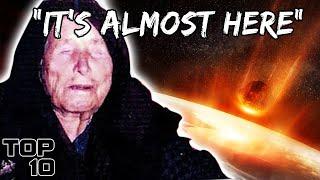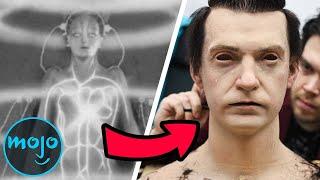10 Historical Predictions That Came True
Description
Historical predictions that came true! From Nostradamus to the Titanic, these precognitions from past history show what was to come in the future.
✔ NEW MERCH AVAILABLE: https://theywillkillyou.com/
Follow us on Instagram: @theywillkillyou
Voiceover by Carl Mason: [email protected]
The existence of atoms was mathematically proven by Albert Einstein in 1905, but the fundamental theory itself traces its roots to Antiquity. At the time, however, it was more in the realm of philosophy since scientists lacked the knowledge and technology necessary for observation. In the 5th century BC, a Greek philosopher named Leucippus proposed that the visible universe was made of minuscule, indivisible particles. They were referred to as “atoms” and the belief was that different atoms created different materials. Leucippus’ student, Democritus, is also credited as a major contributor to the theory. Those who followed this school of thought would be known as Atomists.
Heraclitus, born in the 6th century BC, was a philosopher. He’s also believed to have made some truly fascinating predictions, which science would understand a few thousand years later. Heraclitus only wrote a single work, called “On Nature”, of which only a few fragments have survived. He had a fondness for word-play, which is why his writings are often described as cryptic and paradoxical. Understating them is further complicated by the fact that much of his work was lost.
There are a number of predictions made by the writers of “The Simpsons” animated show, which have come true. Simon Singh, who wrote a book called “The Simpsons and their Mathematical Secrets”, claims that the show presented an equation predicting the mass of the Higgs boson particle. The elementary particle was theoretically predicted in 1964 by physicist Peter Higgs. In a 1998 episode of “The Simpsons”, Homer, one of the show’s main characters, becomes an inventor. He’s presented in front of a blackboard with a complicated equation on it.
Nikola Tesla was, by all accounts, a genius who surpassed the limitations of his era and envisioned technologies that would be of mainstream use nearly a century later. History best remembers Tesla for his contribution in designing the modern alternating current energy supply system. Nevertheless, the inventor was fascinated by the prospect of wireless technology. He believed that it would become widely implemented in domestic management and that numerous transmitters would operate independently, without interference.
Conversations on historical predictions typically include the work of 16th century French physician and astrologer Michel de Nostredame. Better known by his Latinized name, Nostradamus, he published a book in 1555 called “The Prophecies”. The series of quatrains has been credited as accurate foresight but also criticized as a result of misinterpretation or mistranslation. That being said, some of Nostradamus’ writings seem to have come to fruition.
In 1898, writer Morgan Robertson published a novella called “Futility”, later known as “Wreck of the Titan”. It was about a fictional ocean liner called Titan which crashed into the North Atlantic after it struck an iceberg. The plot of the book and even the name of the vessel are eerily similar to the real-life sinking of the RMS Titanic. However, at the time Robertson wrote his novella, the Titanic hadn’t even been conceptualized. The size, speed and life-saving equipment of the two liners bear some uncanny resemblances.
French writer Jules Verne has been called the “Father of Science Fiction” and he’s one of the most-translated authors in the world. His knack for technological prediction has actually inspired a society of true believers, known as Vernians. They regard Verne’s works as scientific manuals rather than mere fictional writings. For example, in “Twenty Thousand Leagues Under the Sea”, which is perhaps the author’s most famous novel, Captain Nemo travels the world’s oceans in an electric submarine called the Nautilus. He also envisioned a trip to the moon a full century before NASA accomplished it.
English language but it seems that the author also made a fascinating prediction. In Gulliver’s Travels, the titular character goes through several extraordinary adventures. In one of his travels, Gulliver visits the flying land of Laputa. It’s there that Swift’s fictional scientists have discovered that Mars has two moons. In real life, this wouldn’t be observed until 1877, by American astronomer Asaph Hall. He discovered Phobos and Deimos, the two Martian satellites. Not only had Swift predicted their existence a century and a half earlier but he’d also gotten their orbit and proximity fairly accurate. In honor of the writer, Hall named a crater on Deimos after him. The only other named feature on Deimos is “Voltaire’s Crater”. French satirist Voltaire had also predicted that Mars had two moons in a short story from 1752.





















Comments